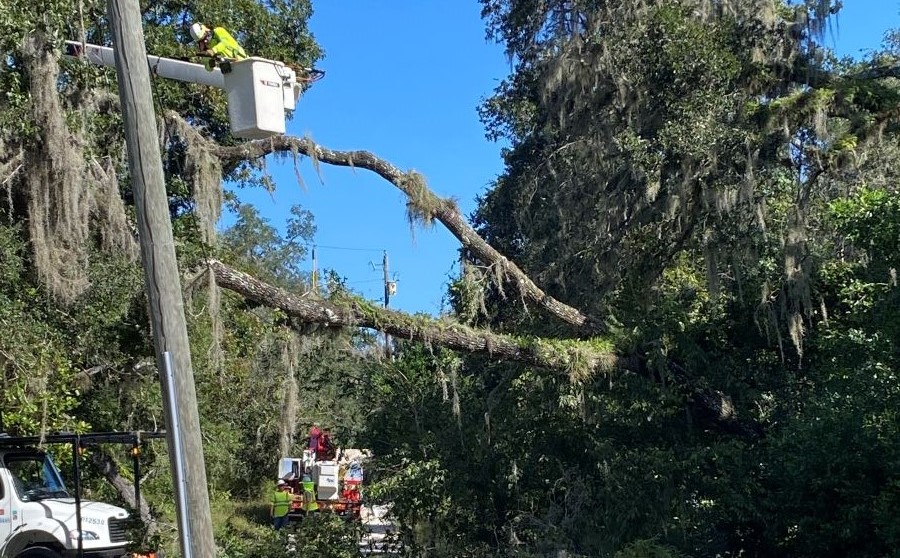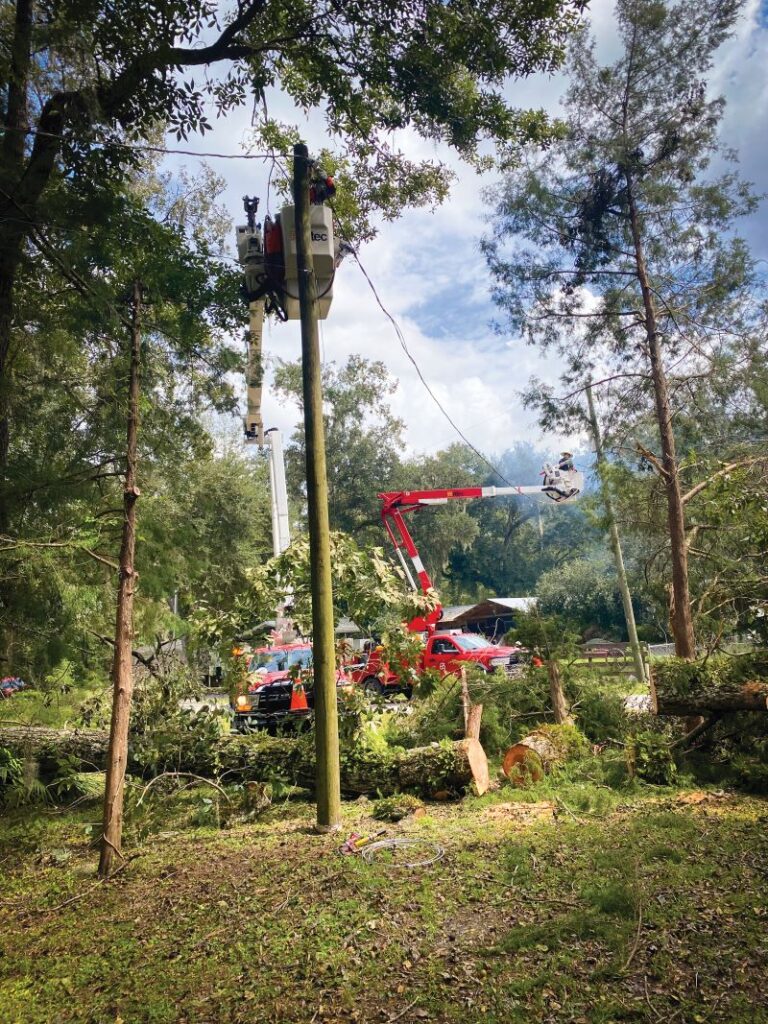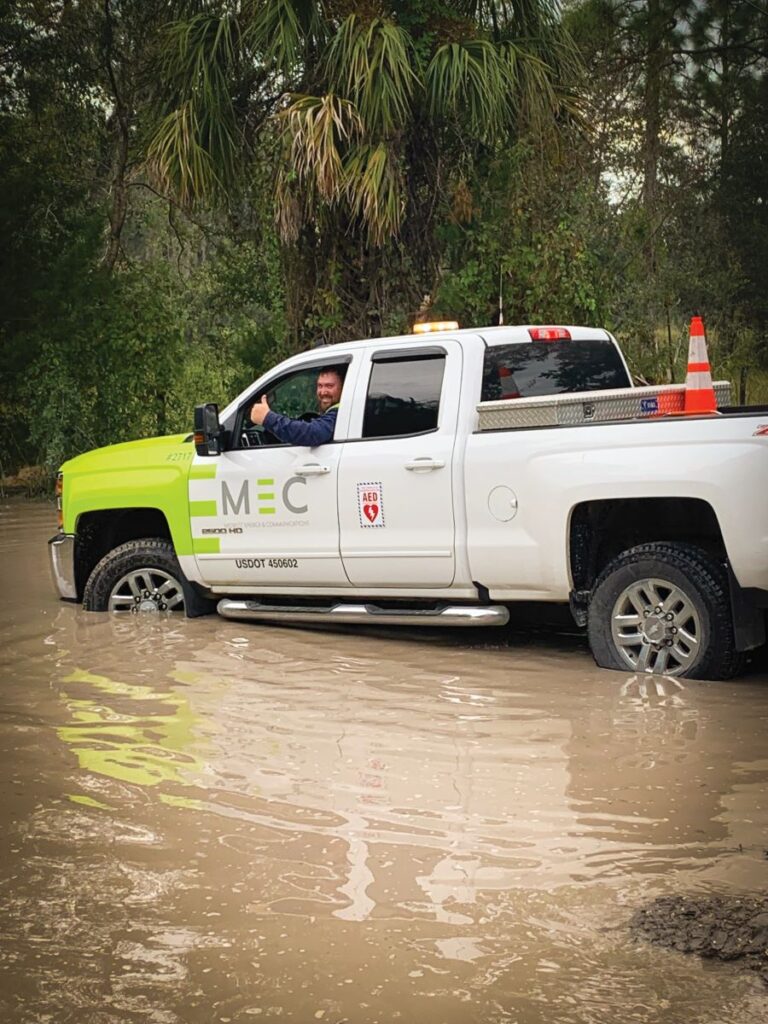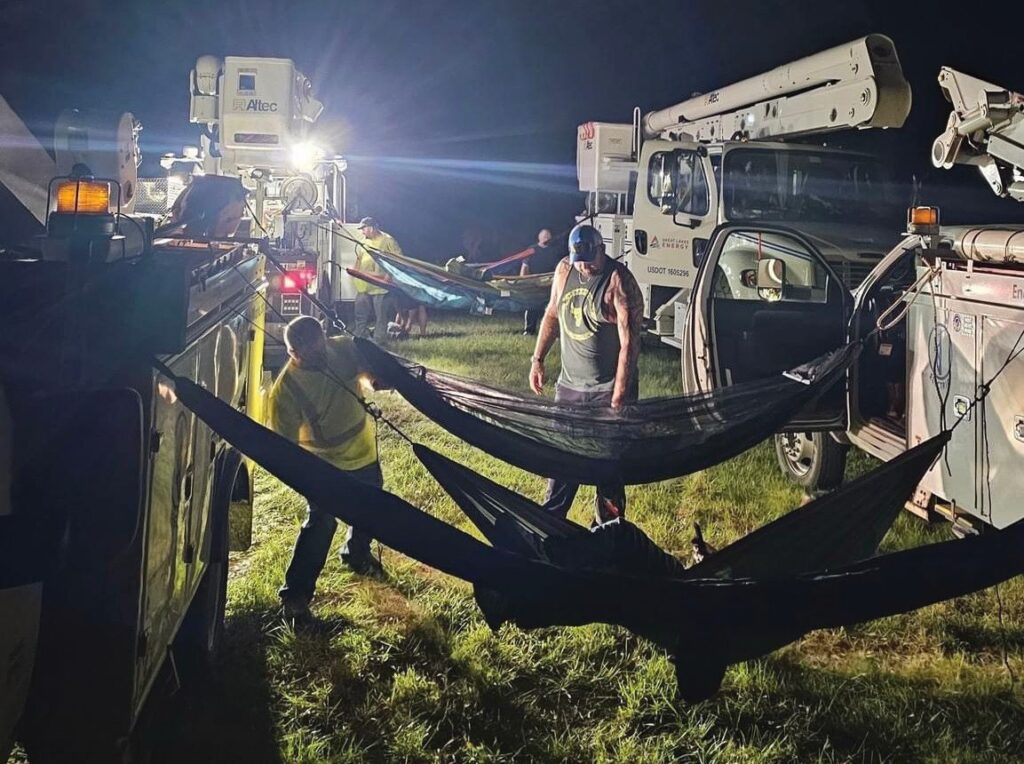When disaster strikes, electric cooperatives strike back. Whether it’s a hurricane in the South, an ice storm in the Midwest, or wildfires in the West, co-ops across the country rely on one another to restore power and rebuild communities. This system, known as “mutual aid,” is one of the most powerful examples of cooperation in action, ensuring that no co-op is left to face a crisis alone.
Why Mutual Aid Matters
Electric cooperatives are member-owned and service-driven. They exist entirely to provide safe, reliable, and affordable power to the communities they serve. This commitment extends beyond day-to-day operations—when a disaster causes widespread outages, co-ops immediately step up to help each other.
Through mutual aid agreements, cooperatives across the country can quickly deploy crews, equipment, and resources to areas hit hardest by storms or other emergencies. This rapid response ensures that power is restored as quickly and safely as possible, minimizing hardship for affected communities. More importantly, it upholds the cooperative principle of Concern for Community, demonstrating that co-ops do more than provide electricity—they support the people who depend on it.
Cooperation Among Cooperatives
Mutual aid is a direct reflection of another cooperative principle—Cooperation Among Cooperatives. Electric co-ops are relatively small compared to large investor-owned utilities, but by working together, they create a vast, nationwide support network capable of tackling even the most extreme challenges.
“When help is needed, co-ops don’t hesitate to answer the call,” said Michigan Electric Cooperative Association (MECA) Safety Director Joe McElroy. “It’s who we are.”
Mutual Aid in Action
Last fall, when Hurricane Milton caused widespread destruction across Florida, nearly 30 Michigan co-op lineworkers answered the call, joining crews from over 15 states to restore power in the hardest-hit areas. Michigan co-op lineworkers also joined crews to help with the devastation in South Carolina caused by Hurricane Helene.
Residents in Florida and South Carolina expressed their appreciation by offering meals and a place to shower. Even retired lineworkers came out of retirement to lend a hand.
Stronger Together
The mutual aid system is one of the strongest examples of the cooperative difference. It’s not just about restoring power—it’s about restoring communities. When co-ops band together, they demonstrate that service, resilience, and teamwork can overcome even the most devastating challenges.
As we prepare for National Lineworker Appreciation Day on April 18, we recognize the dedication and sacrifice of the lineworkers who make mutual aid possible. Their commitment to helping co-ops near and far ensures that no community faces a crisis alone.








